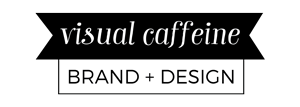
14 Mar What Is Native Advertising And Why Should You Use It
Native advertising is becoming more popular with marketing teams because of its effectiveness compared with traditional ad formats, such as advertising banners.
Traditional ads compete with content you find online and in traditional media: articles, online videos, TV programs, music on the radio, and so on. Instead, native advertising is embedded into the content and is a more seamless and less intrusive way to promote a product, service, or brand.
A good example could be a post published on a person’s social media account that promotes the product or service but appears naturally within their content feed as an image on Instagram, or a tweet on Twitter, for instance.
Another example could be a post on a magazine website within the main feed of news and stories. Clicking on this post will take the user to a sponsored article that includes information about a brand, product, or service but will also provide value about the subject for the reader. Even if they are not interested in the product – they will still gain from the post.
Other examples of native ads include in-content promotions within Spotify playlists and on Twitter by using branded hashtags.
Why do brands and consumers like native advertising?
According to the marketing news website, The Drum, data shows that native ad spending will reach $400bn by 2025. But why are brands spending so much on this method of advertising?
Because native advertisements blend in with the content, they have a higher level of credibility than traditional advertising. Data shows only 54% of customers trust display ads, whereas consumers trust the content of native ads 75% of the time, according to a recent survey from Outbrain. Almost 77% of users did not interpret native ads as advertising, according to an article published by FastCompany.
Sharethrough/IPG Media labs surveyed 4,770 consumers and used the latest eye-tracking technology. The results show that Native ads registered an 18 percent higher lift in purchase intent and a 9 percent lift for brand affinity responses compared with banner ads. The data also shows that consumers spend almost as much time looking at native ads as they did the original editorial content.
If you would like help with your brand messaging, advertising, and digital marketing in Charlotte, North Carolina, to Seattle, Washington, and everywhere in between, get in touch with Visual Caffeine to learn how we can help you.

Sorry, the comment form is closed at this time.